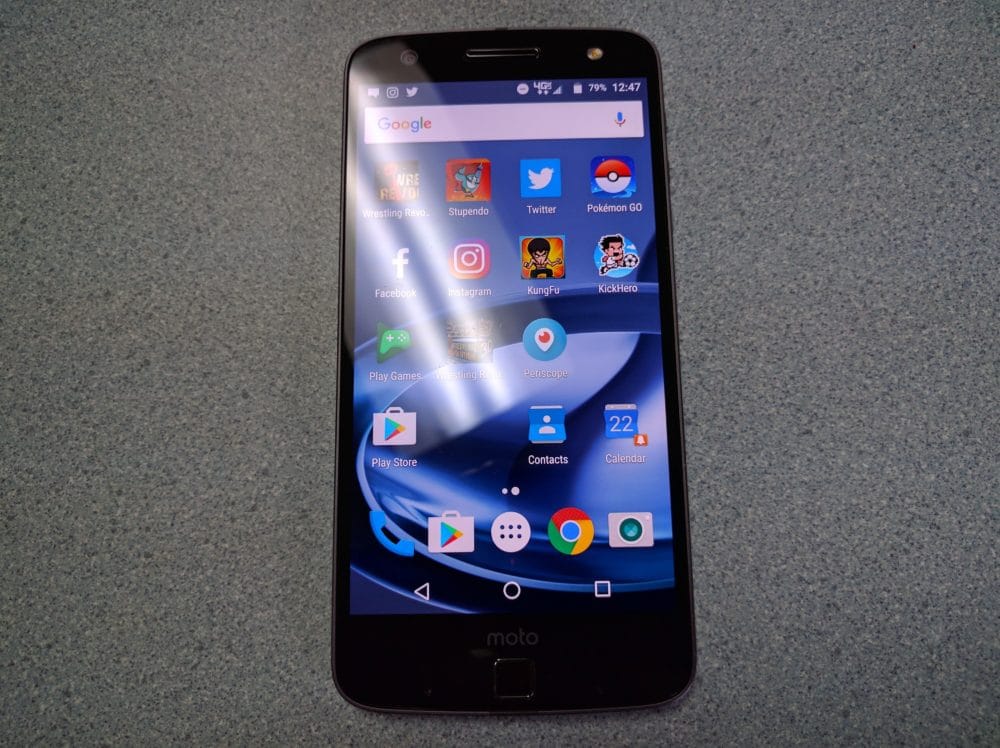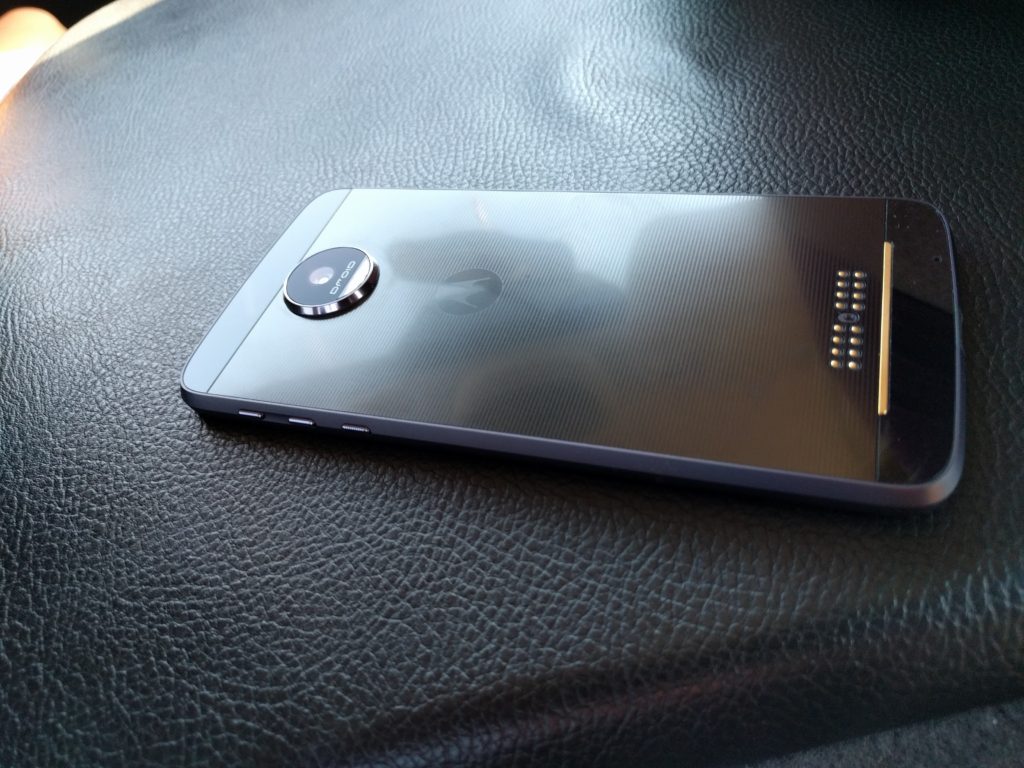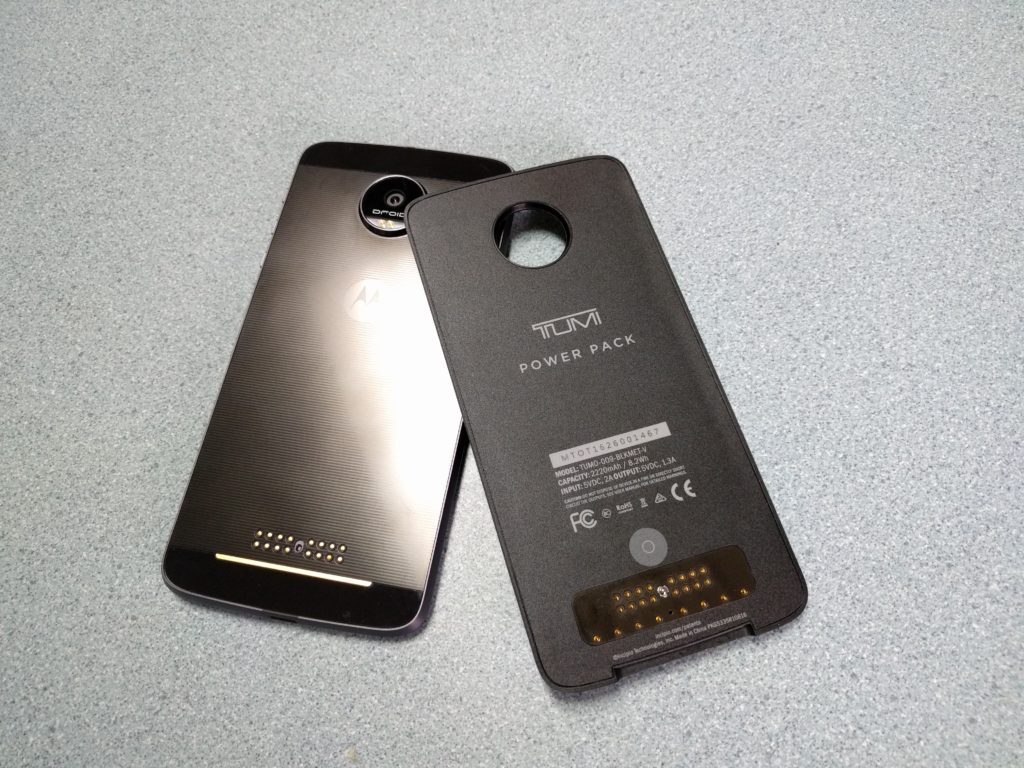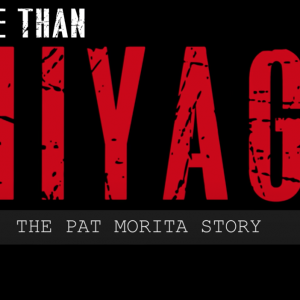Moto Z Force Droid Review
5 min read
Modular phones were once just a pipe dream. An idea that some thought would never truly materialize because of everything a modular device encompasses. LG hit the market first with the G5 and its swappable components but it still felt like something was missing. After Lenovo announced they were officially killing off Motorola, and rebranding the devices as simply Moto, a lot of people felt like the devices would fade away just like the name. Thankfully, Lenovo simply went back to the drawing board and reinvigorated the Moto brand, launching new handsets that they promised would deliver the best modular experience to date. Rocking a brand new premium build and elegant design, the new Moto Z Force Droid is ready to challenge for the top Android phone crown. But do they have enough to topple king of the hill Samsung? Read on to find out..
The design on the Moto Z combines both function and elegance. It combines some of the best build materials to make an amazingly durable phone. The exterior of the device is built with aluminum, stainless steel, and Moto’s ShatterShield glass. Looking at the entire device, you can tell Moto and Lenovo wanted to build a phone that was elegant and unlike any other smartphone available today. The Moto Z Force is incredibly thin and light, making it insanely easy to slip in and out of your pockets. The front of the device holds the front facing camera and the front flash, and one of the most awesome screens I’ve ever used on a smartphone. The screen is 5.5 inches and packs an amazing punch when it comes to color reproduction and depth. The only issue I had with the screen is the fact that with my review model the screen tended to scratch ridiculously easy. After about a week, it looked like I’d had the phone for 6 months, which was a really big issue in my mind. There’s 535 ppi packed into the 1440p (2560×1440) display, and the resolution really shines through during HD video playback. The back cover of the device is where the new smart port for Moto Mods is housed. There’s a pretty decent amount of steel back there for durability and the magnetized adaptors for connecting any Moto mods to the device. There’s also a really large pronounced camera hump for Moto’s new 21MP shooter. Along the bottom of the device is a USB Type C charger, which is slowly becoming the new standard for most mobile devices. The front of the device also holds a small, square fingerprint reader which looks like it could double as a home button but sadly doesn’t. The fingerprint reader was simple to set up and very responsive.

The processing units inside the Moto Z are what most power users will salivate over. It’s powered by a Snapdragon 820 processor and 4GB of RAM. In short, this phone is blazing fast. Running 3D rendered games was a breeze, and streaming HD video and audio was done with relative ease. There’s a 3500 mAh battery on the inside that Moto brags could last all day. From our testing, that statement totally holds up. Without going too insane with usage, we were able to squeeze about 20 hours out of a single charge, which is nothing short of amazing. Oddly enough, Lenovo and Moto decided to omit a standard headset jack from the Moto Z, and instead utilizes the USB C port for everything. There’s also a USB C to Micro USB adaptor included in the box, so while not having an actual headset jack is a pain the inclusion of the adaptor more than makes up for it.
We were also sent the Power Pack battery mod with our review unit. The Power Pack lends an extra 2200 mAh of battery life to the Moto Z, which would most certainly come in handy in a pinch. On the inside of the Power Pack is a small pressible button with an led indicator underneath that shows how much battery life the pack has remaining. When attached, users have the ability to choose to let the Power Pack consistently charge the device’s battery, or always keep the battery level at 80%. Having the Power Pack was cool, but there were two glaring downsides to using it that I just couldn’t overlook. For starters, using the Power Pack adds quite a bit of unwanted bulk to the phone that detracts from the thinness and elegance of the design. Secondly, the pack makes the phone super slick and slippery, and because of that, I dropped the unit several times while using it.

The Moto Z Force has a pretty impressive camera system that features a 21MP camera on the back, and a 5MP Wide-Angle lens on the front. Perhaps one of the more unique features of the front facing camera is the addition of a front facing flash for selfies. While the front camera was decent enough, I mainly used the rear camera for all my photo taking needs. Photos turned out overly awesome, and provided the right mix of balance in any lighting condition. During a trip to northern Michigan, I stopped at a high-end Hot Dog joint, and snapped a panorama pic and was blown away by how good it turned out. If it sounds like I’m a big fan of the camera on the Moto Z Force, it’s because I am. While I’m not ready to crown it the king (or queen) of smartphone cameras, I think it produces photos just as good as the iPhone 6S or Galaxy S7 camera.
The Moto Z Force Droid could very well be one of the best Android phones released this year. With it being exclusive to Verizon Wireless, I’d say they once again have one of the most impressive smartphone lineups available. If you want a phone that’ll give you all day battery, great speed, and can change on the go, the Moto Z Force Droid is the way to go.





